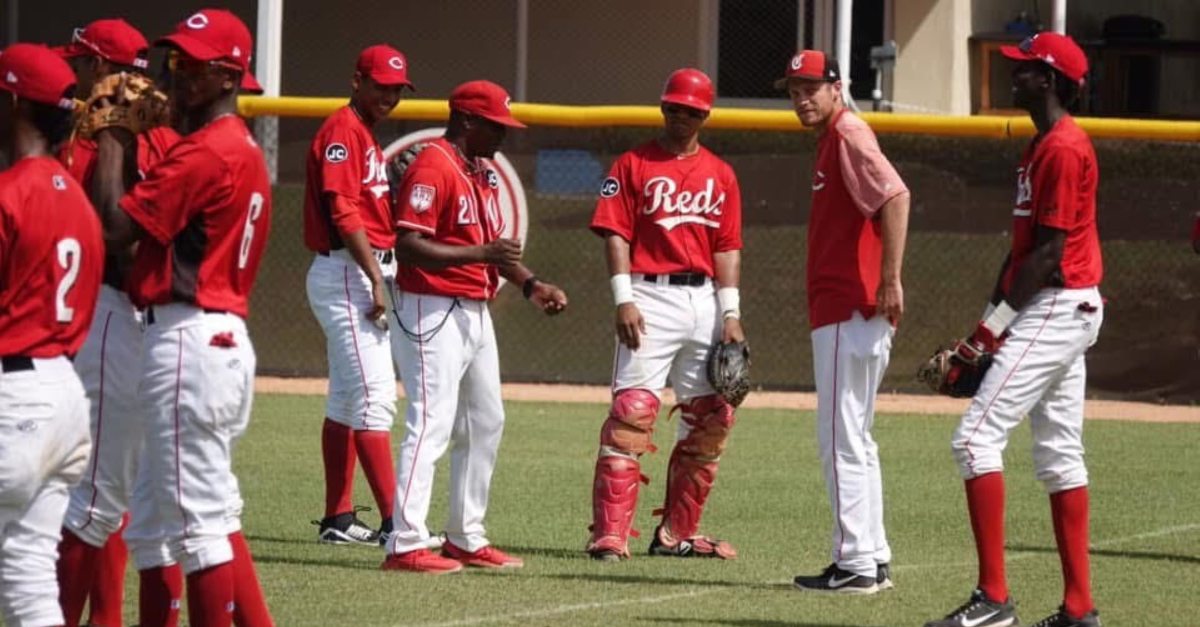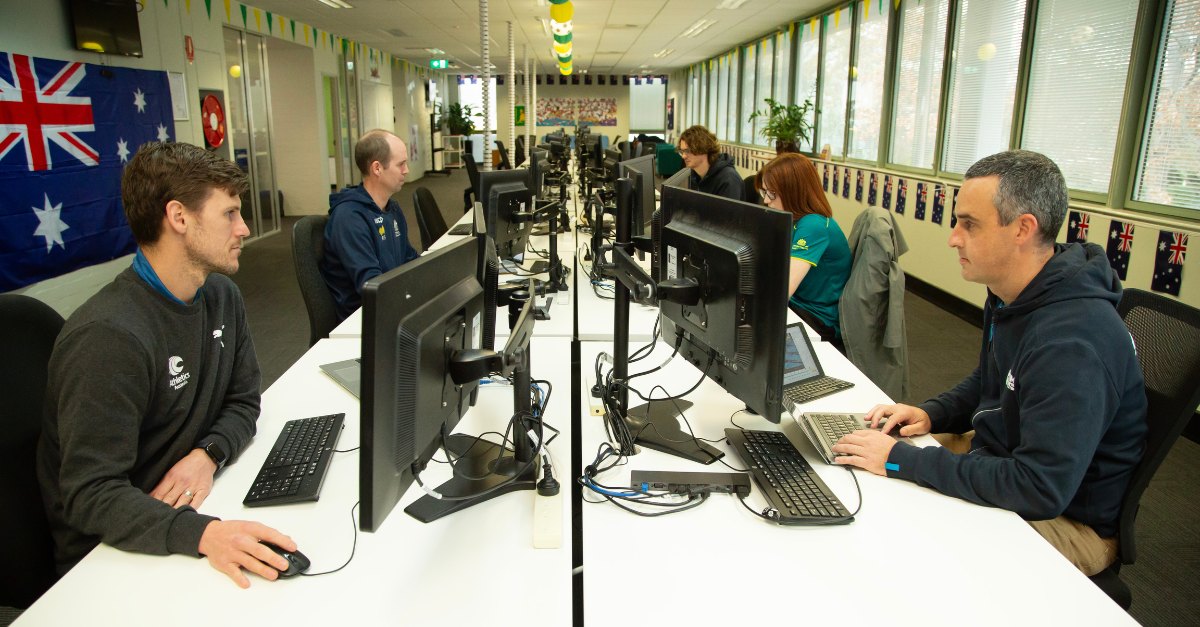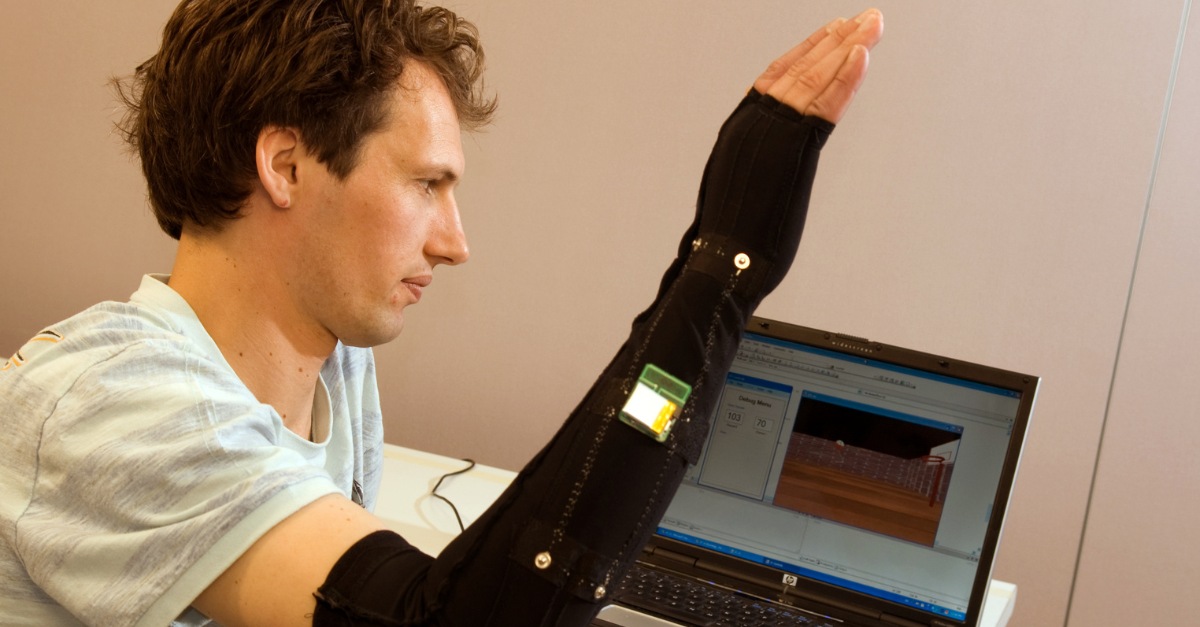
Behind every great athlete is a great mathematician
ACER news 27 Jun 2025 11 minute readThe technology capturing athlete performance is continually advancing, but who is putting the data to best use? We speak to experts from a major league baseball club and the Australian Institute of Sport to reveal how maths skills that students are learning now are driving elite sports.
Over 5 days in Australia earlier this year, teams of students set out to develop a schedule for sporting competitions that could accommodate multiple countries and suit multiple sports.
It would be reasonable to think the task – set by the International Mathematical Modeling Challenge (IM2C) – would be out of their academic league. But these students are in schools helping them to develop highly transferable and in-demand skills – enabling them to select, analyse and measure the impact of interacting factors to create an approach for any given problem.
These are skills that Daniel Beattie, the Pro Scouting Coordinator with the Cincinnati Reds, appreciates as integral to good planning for performance growth in major league baseball.
Beattie is responsible for evaluating players in major and minor leagues, professional leagues in Korea and Japan and leagues outside of major league baseball in Australia and the Dominican Republic.
He says he ‘fell into’ using mathematical principles to analyse and improve performance while playing baseball at the state and national levels in Australia.
‘For me there’s a really long tradition of baseball analysis in the public realm, and that’s really accessible and in the popular media, so I fell into it quite easily,’ Beattie says.
‘As a player I had injuries so I wanted to know why some of these injuries occur, what’s the best way to teach, what intricacies are involved. I wanted to stay healthy and improve my performance.’
While coaching in Australia, Beattie created a blog sharing principles and analysis that caught the eye of athletes and coaches.
‘In the same way you look up to players, there’s a lot of people in the public research space I looked up to as well,’ he says of the work. ‘Being able to replicate the research they’d done and then come up with my own research and use it to help players was key, and getting the feedback with a lot of players that it was really working was pretty rewarding.’
At 23, Beattie was a pitching consultant evaluating players in the Dominican Republic. Today he works through data, often from radar technology, to find competitive advantages.
‘The core challenge for any analyst is trying to understand the player’s true talent; in any given situation there’s a whole heap of factors that can inflate or deflate their performance,’ Beattie says.
‘For example an average batting rate of .300 (meaning a player has hit the ball safely 30% of the times they face a pitcher) might be considered a good performance, but we need to think about opposing fielders, different altitudes, position of the sun and those kinds of things.
‘Trying to stop enough of the noise in the measures we’re capturing – that is a lot of the work and it’s where the tech is coming in,’ Beattie says.

Daniel Beattie, former Australian player and coach, on the field in his role as Pro Scouting Coordinator with the Cincinnati Reds.
What major league baseball measures
‘We can measure how hard a ball is hit, the trajectory it was hit at, the horizontal or spray angle, and the batted ball spin to calculate the probability that it was a hit (where a player reaches a base without fielder errors).
‘We can also look at the probability of that hit being a single, or a double or three-base hit. If you want to do more maths, you can get the run value of those hit types, and more maths again to work out the market value of the player.
‘We do a lot around rates. Making sure you measure things properly and from there you can do basic stuff with maths, then work at the next level to work out more, and then you do a lot of modelling – the same way the kids are doing it in the Challenge – to see what we might be able to improve or address through our system.’
Told that students in the IM2C had included jet lag in their considerations when creating a scheduling model, Beattie noted that sports science looks closely at player fatigue, researching workloads and days off.
‘As we get more wearable technology that measures sleep quality, you could build that into a model,’ he suggests.
How the IM2C prepares students
IM2C Australia Director Dr Kristy Osborne notes the remarkable amount of factors that students need to consider – both mathematically and in their reporting – to solve the IM2C problem and justify their solution.
This year’s entries considered factors such as different kinds of tournaments, country participation, time zones, travel impact on athletes, carbon emissions, minimising costs and maximising broadcast revenue.
‘Students who take part get a deeper understanding of how different kinds of maths can be used to explain a situation or a way forward,’ Dr Osborne says. ‘Those schools that take it on are giving their students the gift of knowing what it feels like to confront the complexities of a real-world problem and be invigorated by it, rather than intimidated.’
Canberra College teacher Sonali Kansal recently told Teacher Magazine that ‘challenges like the IM2C … reinforce the idea that mathematics is not solely about finding the correct answer, but also about asking meaningful questions and exploring complex systems with curiosity and rigour’.
Advancing Australia’s Olympic and Paralympic preparation
At the Australian Institute of Sport (AIS) the Director of Intelligence and Analytics David Fulcher is helping the nation’s high performing sports associations answer their most meaningful questions in the pursuit of developing winning athletes.
Fulcher says data scientists, analysts and engineers are an important part of a problem-solving team. They contribute ‘through leveraging data to enhance performance and deliver a competitive advantage to Australia’s high-performance system’.

In the AIS Analytics Hub set up during the 2024 Olympics and Paralympics, 20 performance analysts, 9 data analysts or engineers and 5 Paralympics Australia staff worked to help athletes prepare for their next events. Image: AIS
‘As Australia prepares for future Olympic and Paralympic games, critical thinkers and data experts will continue to be an integral part of supporting athletes to win well,’ Fulcher says.
Reflecting the power of analytics and modelling in advancing a nation’s goals, the AIS is tasked with ensuring those sports with the least resources for analysis, like some paralympic sports, are assisted alongside those with greater access to data, like swimming.
The focus sharpens with every advance in technology.
How elite sports are using technology
In swimming for example, computer vision tracking that can reduce interference from splashing is now in use across pool lanes to measure things like stroke rate, breath and velocity.
The Australian netball team is benefitting from the CSIRO’s work with body-mapping garments, using an interactive sleeve that plays a series of beats in-sync with arm and wrist movements as players shoot for goal.
The beats are triggered as limbs move through certain positions. If the motion indicates an athlete’s successful natural action, the beats describe a recognisable pattern which an athlete might repeat in a stressful situation to settle into that action.

CSIRO Textile and Fibre Technology scientist Dr Richard Helmer is working with the Australian Institute of Sport to develop interactive textiles or 'body-mapping garments’. Image: CSIRO
The Future of Australian Sport report also notes the CSIRO’s longstanding work on its digital human twin technology that captures body movements with readily-available cameras from mobiles and iPads, and can be used to build an overlay of biomechanical modelling of bones and muscles.
‘By combining deep learning algorithms with knowledge of a person’s musculoskeletal mechanics, the human digital twin could identify movements that present a risk of injury,’ the report says.
New ways of thinking
Prepared by the Australian Sports Commission and the CSIRO, the report looks at the megatrends shaping the sport sector into the next decade.
It notes that ‘unprecedented access to vast and high-quality data sources and datasets by sports researchers and practitioners will accelerate the adoption of new ways of thinking’.
It predicts the value of the US sports analytics market will grow from 1.05US Billion in 2020 to 5.11US Billion by 2026.
It also predicts the skills that will become more in demand. They align closely with the kinds of skills students can develop in the IM2C.
‘Sport professionals and performance support roles (including doctors and coaches) will increasingly focus more on the interpretation of data and implementation of learnings into practice,’ the report says, ‘and complex problems will be solved by multi-disciplinary teams.’
For Dr Osborne, who has just learnt Australia’s top 2 student teams have been awarded an honourable mention in the international round of the IM2C, this is not a surprise.
‘The volume of data in the world around us is always growing,’ she says. ‘Equipping young people with the skills to choose the most appropriate and valid data sources – as well as a toolbox of mathematical approaches for problem solving – is the key to being ready for future challenges.’
The latest report from ACER analysing Trends in International Mathematics and Science Study data from 2023 shows this is something most Australian secondary teachers also believe is important, with 73% of year 8 maths teachers wanting professional development on improving students' critical thinking or problem-solving skills.
Get involved
Visit the IM2C page on the ACER website to learn more, find teacher resources and register (when the next round opens) for the International Mathematical Modeling Challenge.
